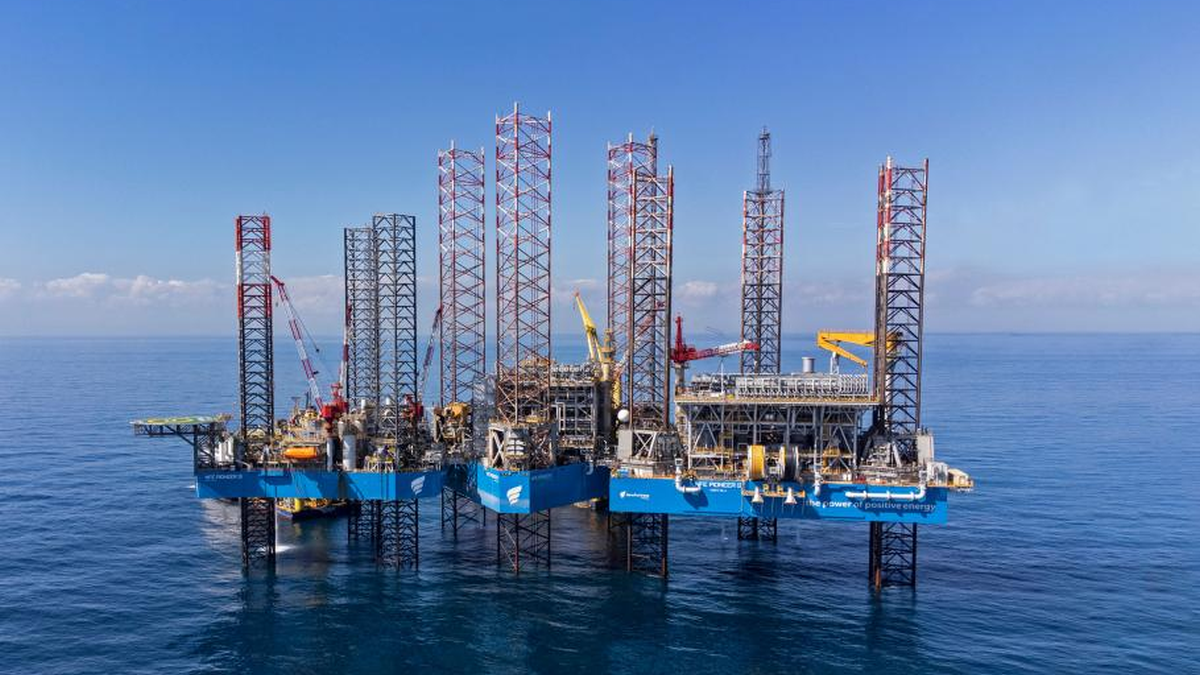 Altamira FLNG in Mexico: North America is expected to take the lead in terms of newly installed FLNG capacity (source: NFE)
Altamira FLNG in Mexico: North America is expected to take the lead in terms of newly installed FLNG capacity (source: NFE)
Small-scale LNG projects are revolutionising energy distribution, offering cost-effective and environmentally friendly solutions
The International Gas Union’s Global Gas Report 2023 underscores the pivotal role of LNG in facilitating a structured transition towards sustainable energy ecosystems. Chapter 4 of the report, titled “LNG as a critical conduit for an orderly energy transition”, elucidates on the multifaceted contributions of LNG within the evolving energy landscape.
Small-scale LNG (ssLNG) emerges as a beacon of reliability and cost-efficiency, particularly in underserved regions such as small settlements, islands, and developing areas. The report highlights the stark reality that many of these regions rely heavily on high-emissions energy sources like coal, diesel, and traditional biomass. The report states: “ssLNG is an attractive fuel option, especially viable in shipping and long-haul heavy-duty road transport, offering a competitive and more environmentally friendly alternative to oil and diesel.”
In delineating the role of LNG in future energy systems, the report stresses its indispensability as a responsive and dispatchable balancing source. While batteries are poised to address shorter periods of peak demand and intermittency events, natural gas and low-carbon gases are deemed essential for ensuring continuous energy supply during longer gap periods. The report asserts: “The availability of affordable, reliable, and efficient low-carbon gaseous energy will be critical to maintain stable and sufficient energy supply.”
Furthermore, the dynamic distribution modes of LNG, exemplified by its utilisation as “virtual pipelines,” underscore its unparalleled scalability and flexibility. The report cites instances such as the surge in US LNG exports to Europe during Russia’s war with Ukraine and Japan’s reliance on LNG post the Fukushima disaster as poignant examples of LNG’s criticality and adaptability.
The report underscores the pressing need for cleaner and more accessible energy sources, especially in regions grappling with decentralised power generation. Sub-Saharan Africa, for instance, heavily relies on oil for its dispersed power infrastructure, with distributed diesel capacity estimated to range from 45 GW to 100 GW. This reliance on diesel, characterised by its high emissions and cost inefficiencies, underscores the imperative for alternative energy solutions. The report highlights that “increased demand for long-duration balancing in future electricity systems calls for dispatchable energy sources, such as gas,” in consequence accentuating the relevance of ssLNG in such contexts.
“ssLNG is an attractive fuel option, especially viable in shipping”
Furthermore, ssLNG presents a compelling proposition in terms of investment efficiency and lead-time reduction compared to traditional LNG infrastructure. This attribute is particularly advantageous in developing regions, where satellite terminals can be swiftly established to meet evolving energy demands. The report cites the example of the Port Edward LNG project in Canada, which stands as a testament to the cost-effectiveness and expediency of ssLNG initiatives. As noted in the report, the Port Edward LNG plant aims to cater to both export markets and domestic consumers in remote communities seeking cleaner fuel alternatives.
Moreover, the environmental benefits of LNG, including its significant reduction in emissions compared to conventional fuels, underscore its attractiveness as a fuel option. The report highlights that “LNG emits zero sulphur oxides (SOx) and particulate matter (PM) and 90% less nitrogen oxides (NOx) compared to heavy fuel oil.” This environmental advantage positions LNG as a preferred choice, particularly in maritime and heavy road transport sectors.
The report also sheds light on the regulatory shifts driving the adoption of LNG as a marine fuel, citing IMO’s stringent regulations on fuel oil sulphur limits. This regulatory landscape, coupled with the economic competitiveness of LNG, has propelled its uptake in the shipping industry, with a significant portion of new vessel orders earmarked for LNG propulsion.
Furthermore, the report highlights Nigeria’s strides in leveraging LNG to enhance domestic energy accessibility and reduce emissions. It underscores that “the growth in the domestic market has notably been enabled through small-scale applications,” signifying the pivotal role of ssLNG in driving local energy transitions.
In Nigeria, pioneering initiatives such as Greenville LNG’s mini-LNG facility in Rivers State exemplify the homogenisation of gas resources. The report notes that “the development of ssLNG in Nigeria has effectively democratised gas by increasing the availability of energy to the public, in turn facilitating economic growth.” This paradigm shift underscores the catalytic role of ssLNG in enhancing energy accessibility and fostering economic prosperity.
Moreover, the report underscores the evolution of the LNG value chain through the introduction of floating facilities, including floating LNG (FLNG) and floating storage and regasification units (FSRUs). The report says: “Floating facilities can be redeployed to new locations if needed,” thereby unlocking unprecedented flexibility and scalability in LNG operations.
FLNG technology, in particular, stands out for its capacity to commercialise small or stranded gas reserves in a cost-effective manner. As highlighted in the report: “FLNGs offer various advantages over onshore projects,” including reduced lead time and enhanced operational flexibility. The West African region, with its abundance of marginal gas fields and limited infrastructure, has emerged as a focal point for FLNG deployments, capturing 46% of global FLNG capacity installations in 2022.
Furthermore, the report underscores the strategic significance of FSRUs in augmenting regasification capacity, particularly in response to geopolitical energy crises. It says: “FSRUs played a key role in Europe’s response to the energy crisis escalated by the Russia-Ukraine war and the loss of Russian gas volumes,” underscoring their agility and responsiveness in mitigating supply disruptions.
Projects like New Fortress Energy (NFE) Altamira FLNG are slated to bolster LNG production and export capacities. The report anticipates that “North America is expected to take the lead in terms of new installed FLNG capacity in the coming years,” signifying a strategic pivot towards agile and scalable LNG infrastructure solutions.
The report says that “FSRU infrastructure has been invaluable in restoring Europe’s energy security,” exemplifying its pivotal role in mitigating supply disruptions and enhancing energy accessibility.
Europe’s burgeoning investment in FSRU projects underscores the region’s strategic pivot towards LNG infrastructure resilience and adaptability. With 17 new FSRU projects approved in 2022, Europe is poised to surpass traditional LNG markets such as South America and the Middle East in installed regasification capacity. The swift operationalisation of projects like the Eemshaven FSRU underscores the agility and responsiveness inherent in FSRU deployments.
Moreover, the report highlights the critical role of LNG infrastructure in balancing supply-demand dynamics amidst market uncertainties. It emphasises that “the responsiveness and scalability of LNG infrastructure play a critical role in safeguarding energy security,” particularly during periods of supply shortages and market imbalances.
In addition to its immediate responsiveness, LNG infrastructure holds immense potential for decarbonisation and future-proofing within the energy ecosystem. However, the transition towards utilizing LNG infrastructure for low-carbon gases presents substantial challenges, particularly in retrofitting existing infrastructure for hydrogen utilisation. The report acknowledges that “the retrofitting of LNG infrastructure for use in the hydrogen value chain presents substantial challenges,” including significant capital expenditure and technological compatibility issues.
In conclusion, the IGU Global Gas Report 2023 underscores the pivotal role of LNG infrastructure in navigating the complexities of the energy transition. From enhancing energy security to catalysing decarbonisation efforts, LNG infrastructure emerges as a cornerstone in shaping a sustainable and resilient energy future.





